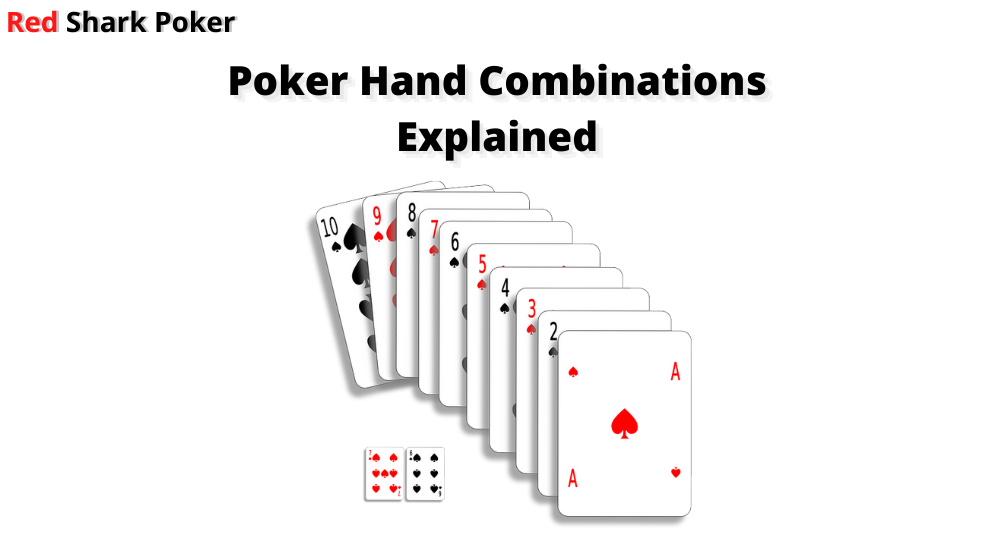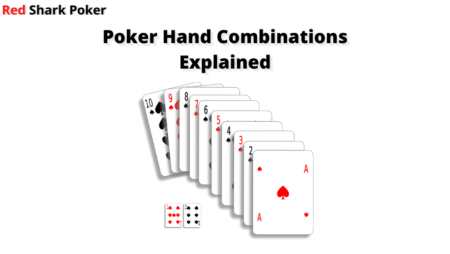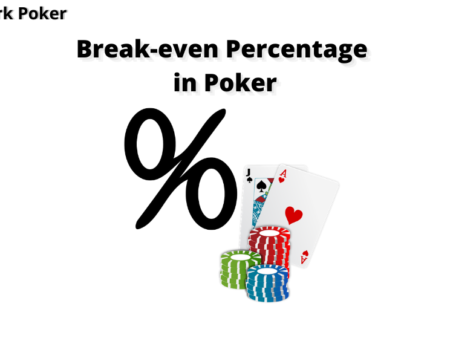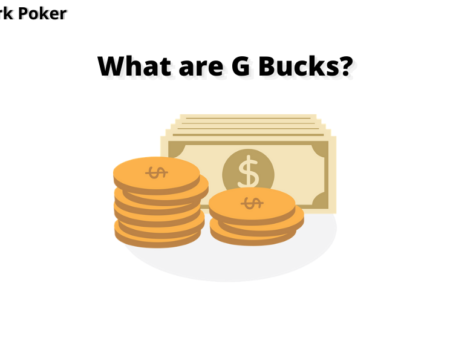

If you are playing tight and 3-bet with only AA, KK, QQ, and AK, have you ever wondered why you are dealt AK more often than the other monster pairs? Is it a lucky hand for you? Well, there is no such thing as a lucky hand in poker. You are dealt more often due to poker combinatorics!
Scary as it may sound, combinatorics is a relatively simple concept that involves basic math. The more popular names of poker combinatorics are “poker hand combos” and “poker hand combinations”. You must have heard of poker hand combinations before, but only a very few players know how to use it. So, let us understand this important concept and learn how to apply it to make the right decisions.
What are Poker Hand Combinations?
Poker hand combinations or combinatorics is simply finding out the different combinations of a specific hand. In other words, you are finding out how a specific hand can be dealt in different ways. For example – What are the hand combinations of pocket kings? Or in how many different ways can you be dealt pocket kings? If you sort all kings from a deck and make pairs, you will find that there are six different combinations of pocket kings.
Hand combinations of Pocket Kings:
Combo 1: K♥K♦
Combo 2: K♠K♣
Combo 3: K♥K♠
Combo 4: K♥K♣
Combo 5: K♦K♠
Combo 6: K♦K♣
Preflop Hand Combinations in Poker
There are 1326 possible poker hand combinations on the preflop. The most common hand combinations that you need to remember are as follows:
Unpaired Hands – 16 Combos
Any unpaired hand (suited + off-suit) has a total of 16 combinations. For example, a specific unpaired hand like AK has the following combinations:
| A♥K♥ | A♦K♦ | A♠K♠ | A♣K♣ |
| A♦K♥ | A♥K♦ | A♣K♠ | A♠K♣ |
| A♠K♥ | A♠K♦ | A♥K♠ | A♥K♣ |
| A♣K♥ | A♣K♦ | A♦K♠ | A♦K♣ |
Off-suit Unpaired Hand – 12 Combos
Any off-suit unpaired hand has a total of 12 combinations. For example, a specific off-suit unpaired hand like AK off-suit has the following combinations:
| A♦K♥ | A♥K♦ | A♣K♠ | A♠K♣ |
| A♠K♥ | A♠K♦ | A♥K♠ | A♥K♣ |
| A♣K♥ | A♣K♦ | A♦K♠ | A♦K♣ |
Suited Unpaired Hand – 4 Combos
Any suited unpaired hand has a total of 4 combinations. For example, a specific suited unpaired hand like AK suited has the following combinations:
| A♥K♥ | A♦K♦ | A♣K♣ | A♠K♠ |
Pocket Pairs – 6 Combos
Any pocket pair has a total of 6 combinations. For example, pocket aces have the following combinations:
| A♥A♦ | A♠A♣ | A♥A♠ |
| A♥A♣ | A♦A♠ | A♦A♣ |
Poker Hand Combination Chart
You can quickly refer to the chart below to remember the important poker hand combinations. You should have these numbers at your fingertips to do quick calculations.
| Type of Hand | Hand Combinations |
| Unpaired Hand (Suited + Off-suit) | 16 Combos |
| Off-suit Unpaired Hand | 12 Combos |
| Suited Unpaired Hand | 4 Combos |
| Pocket Pairs | 6 Combos |
Using Preflop Poker Combinatorics with Hand Ranges
Poker combinatorics become a powerful weapon when used with your opponent’s hand ranges. Combinatorics give you more insight into your opponent’s range, which helps you to figure out which hand is more likely to be dealt that falls within his range. For example, if a tight opponent who always 4-bets with only AA, KK, QQ and AK (suited + off-suit), you can mathematically find out which hand is more likely to be dealt.
There are four hands in his 4-bet range. Your perceived probability is that each hand has a 25% chance to be dealt.
- AA = 25%
- KK = 25%
- AK = 25%
- QQ = 25%
Let’s see the actual probability by using poker combinatorics.
- AA = 6 combinations
- KK = 6 combinations
- QQ = 6 combinations
- AK = 16 combinations
Total Combination = 34
Now, the actual probability of each hand being dealt has changed significantly.
- AA = 6/34 = 17.6%
- KK = 6/34 = 17.6%
- QQ = 6/34 = 17.6%
- AK = 16/34 = 47%
The actual probability of your opponent 4 betting with AK is 47% of the time. This is far more than your perceived probability of 25%. This means that your opponent will be holding AK more often than AA, KK and QQ. So, whenever he 4-bets, there is a higher probability that he is holding an AK.
Post-flop Hand Combinations in Poker
Things get a bit tricky on the post-flop. After the flop, you know which cards have hit the board. So, you need to subtract the “known” cards, also known as the card removal effect, to calculate the hand combinations.
Calculation of Poker Hand Combos
There are two board categories when it comes to the calculations of poker combos – Unpaired and Paired Hands.
Unpaired Hand Calculations
If we hold K♦ Q♠ on a K♠ 9♥ 2♣ flop, our opponent can beat us at the moment if he holds an AK. So, how many combinations of an unpaired hand like AK are there? In order to calculate, we need to use the following formula:
Number of Available Cards for the First Card X Number of Available Cards for the Second Card
Number of Available Cards for the First Card: In AK, an ace is the first card. There are four aces in a deck. As there are no aces on the flop, the number of available cards for aces is 4.
Number of Available Cards for the Second Card: In AK, a king is the second card. There are four kings in a deck. As we hold 1 king and the flop has another king, there are 2 cards available for kings.
Let’s put the numbers together.
Number of Available Cards for the First Card = 4
Number of Available Cards for the Second Card = 2
Hand Combinations = 4 X 2
= 8
So, AK has 8 possible combinations when we hold K♦ Q♠ on a K♠ 9♥ 2♣ flop.
If your opponent is holding AK, the total poker hand combinations of AK changes on preflop and post-flop.
- Preflop Hand Combinations of AK = 16
- Post-flop Hand Combinations of AK = 8 (based on the above example)
Paired Hand Calculations
In the same example, if we hold K♦ Q♠ on a K♠ 9♥ 2♣ flop, our opponent can beat us if he holds a pair of nines as he will have a set over our top pair. So, how many combinations of a pocket pair like 99 are there? In order to calculate, we need to use the following formula:
Number of Available Cards X (Number of Available Cards – 1)
_____________________________________________________________
2
A simpler way to describe the formula is to multiply the number of available cards by the number of available cards minus 1, and divide it by 2.
Number of Available Cards: There are 4 Nines in a deck. As the flop has 1 Nine, there are 3 nines available.
Hand Combinations = 3 X (3-1)/2
= 3 x 2/2
= 6/2
= 3
So, there are 3 possible combinations of pocket nines when we hold K♦ Q♠ on a K♠ 9♥ 2♣ flop.
How to Use Poker Hand Combinations?
Poker combinatorics help you in making the right decision in tough situations. Let’s look at a detailed example below to check the poker hand combinations:
You hold 7♦ 7♠ on a board like A♦ K♠ 9♥ 7♥ 4♣. You have a set and bet $20 into a pot of $80. However, your opponent, who is a fish, goes all-in with his stack of $70. You have tough pot odds of 41%. You need at least 41% equity to call here. Let’s do the calculation of poker hand combinations to decide what to do in this tough spot.
If you don’t know how to calculate pot odds, read this chapter: How to Calculate Poker Pot Odds?
You have a good read on your opponent and come to the following conclusions:
- He is going all-in if he has a Two Pair with an ace or a Set.
a. Two Pair with an ace: His Hand Range – AK, A9, A7 or A4
b. Set: His Hand Range – AA, KK, 99 or 44 - He might be bluffing on the river as he has missed his flush draw
As your opponent is a fish, there is a strong possibility that he really has a set or two pair with an ace, let’s look at the poker combinatorics.
What are the hands that beat you?
AA, KK and 99
Let’s look at the opponent’s winning hand combinations.
AA = (3 x 2)/2 = 3
KK = (3 x 2)/2 = 3
99 = (3 x 2)/2 = 3
Opponent’s Winning Hand Combinations = 9
What are the hands that don’t beat you?
AK, A9, A7, A4 and 44
Let’s look at the opponent’s losing hand combinations.
AK = 3 X 3 = 9
A9 = 3 X 3 = 9
A7 = 3 X 1 = 3
A4 = 3 X 3 = 9
44 = (3 x 2)/2 = 3
Opponent’s Losing Hand Combinations = 33
Total Hand Combination (Winning + Losing) = 33 + 9 = 42
Let’s look at the percentages of these combinations.
Opponent’s Losing Hand Combinations = 33/42 = 79%
Opponent’s Winning Hand Combinations = 9/42 = 21%
You can see that you will have 79% equity against the tough pot odds of 41%. Here, you have a positive expected value of +$64.3. With this huge equity, you can easily catch his bluff as well. What seemed like a losing situation turned out to be profitable in the long run!
If you don’t know how to calculate expected value, read this chapter: How to Calculate Expected Value in Poker?
Conclusion
Poker hand combinations work best when you use it with your opponent’s hand ranges. When you have a good knowledge of your opponent’s hand ranges, you can use poker combinatorics to figure out what possible combinations are there for his hands. It is quite difficult to do this math in real-time, but with some practice, you will be well acquainted with the possible hand combinations. The combination of poker combinatorics with the hand ranges is a dangerous weapon that you should have in your arsenal. It will help you to have a better insight into your opponent’s possible poker hand combos, which will allow you to make the right decisions in tough situations.




